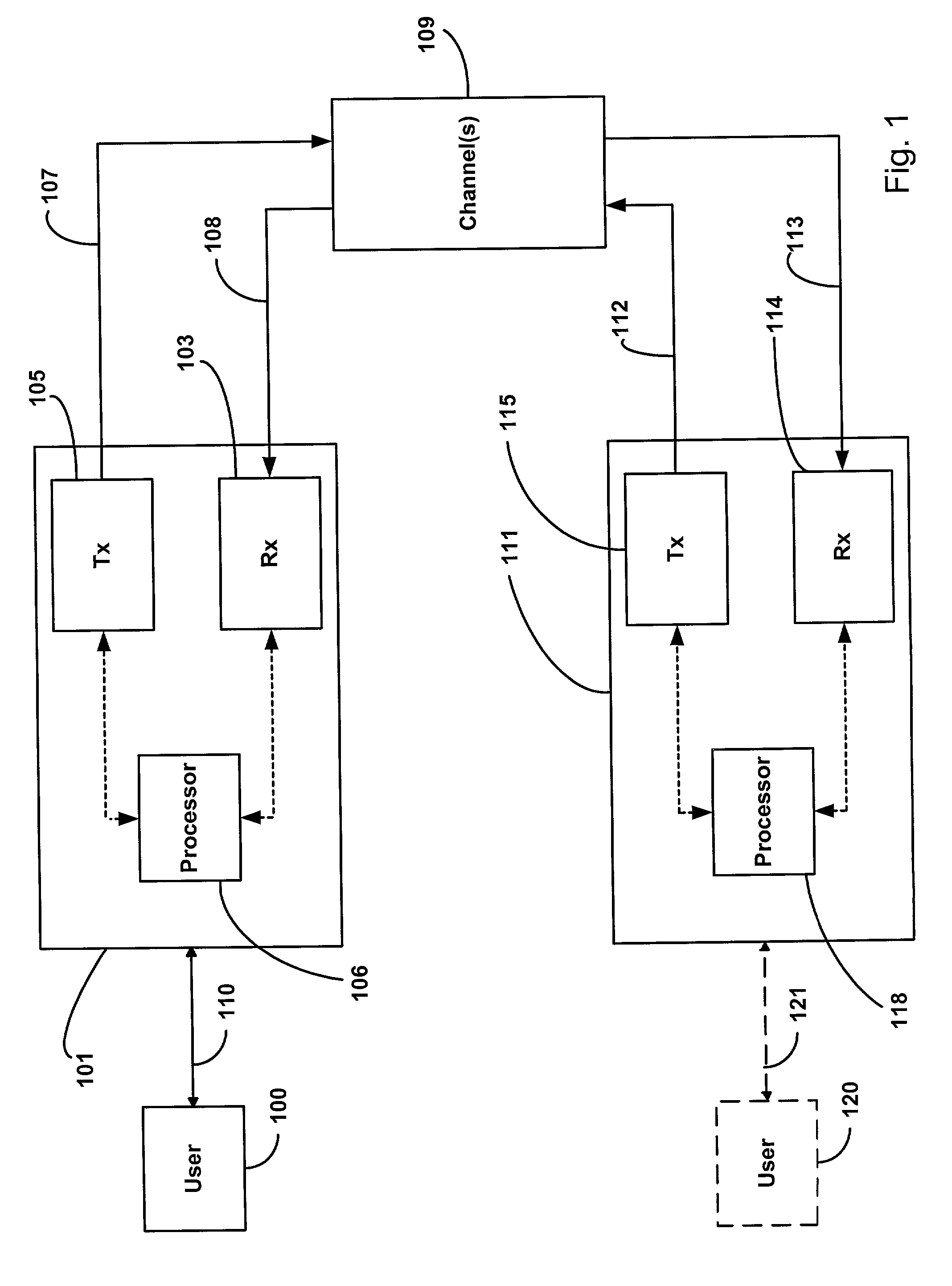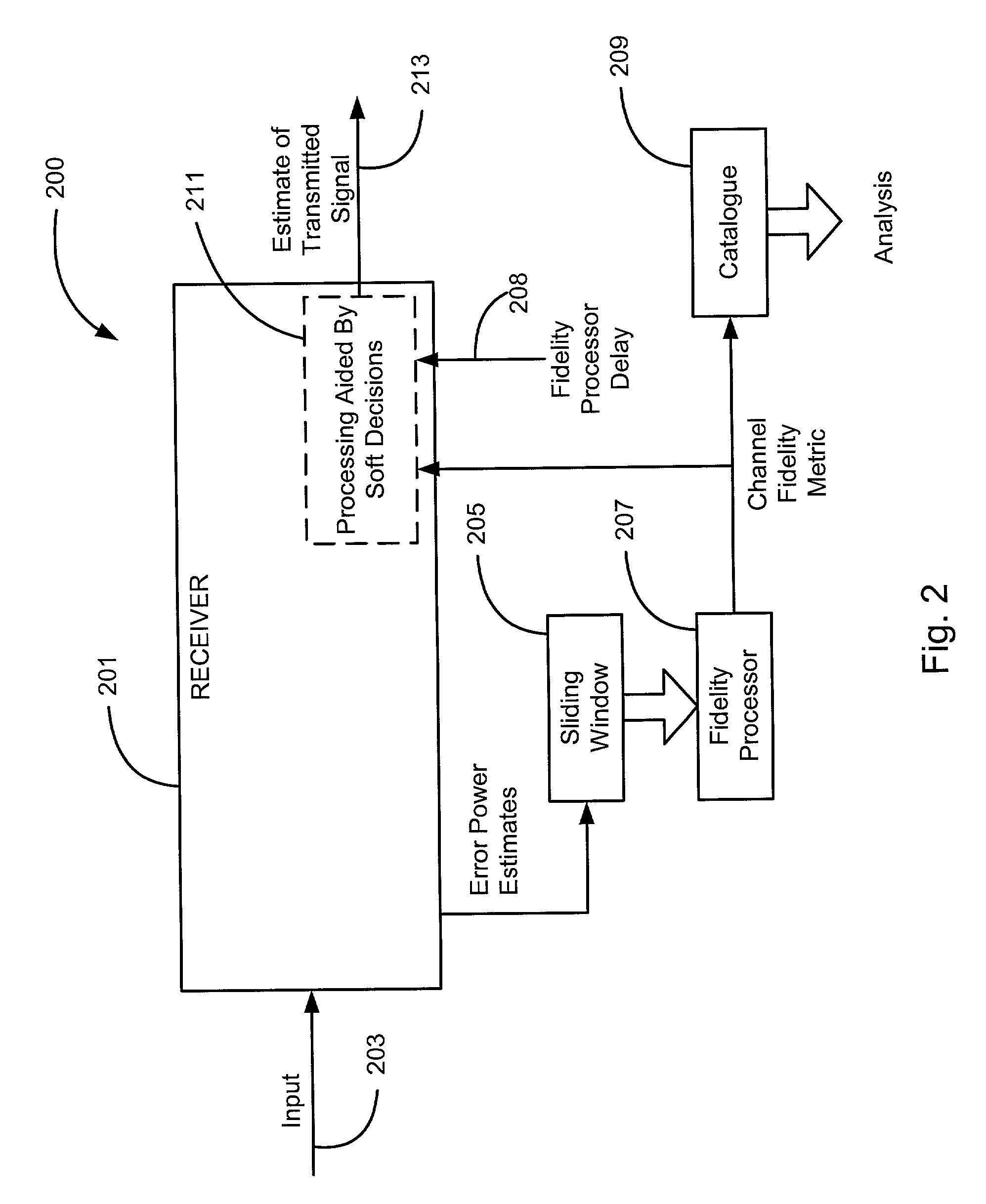Chip blanking and processing in SCDMA to mitigate impulse and burst noise and/or distortion
a technology of scdma and chip, applied in the field of information transfer, can solve problems such as adversely affecting communication, affecting communication, and affecting communication, and achieve the effect of reducing impairmen
- Summary
- Abstract
- Description
- Claims
- Application Information
AI Technical Summary
Benefits of technology
Problems solved by technology
Method used
Image
Examples
Embodiment Construction
[0033]The following description is made with reference to the appended figures.
[0034]According to one embodiment of the present invention, impairment, burst noise or other distortion-inducing mechanism of a duration of one up to several chips (6 chips for example) is detected. Means are provided to correct symbol decisions even in the presence of such impacted or distorted chips. More specifically, one embodiment of the present invention relates to means for detecting at least one and up to several chip(s) with increased impairment, distortion or noise as provided below. In the embodiments provided below, it is contemplated that a chip plays the roll of a symbol, although other embodiments are also contemplated as discussed.
[0035]One embodiment of the present invention relates to a spreading technique to transmit symbols at the same time on the same frequency. More specifically, one embodiment of the present invention relates to a Synchronous Code Division Multiple Access technique ...
PUM
 Login to View More
Login to View More Abstract
Description
Claims
Application Information
 Login to View More
Login to View More - R&D
- Intellectual Property
- Life Sciences
- Materials
- Tech Scout
- Unparalleled Data Quality
- Higher Quality Content
- 60% Fewer Hallucinations
Browse by: Latest US Patents, China's latest patents, Technical Efficacy Thesaurus, Application Domain, Technology Topic, Popular Technical Reports.
© 2025 PatSnap. All rights reserved.Legal|Privacy policy|Modern Slavery Act Transparency Statement|Sitemap|About US| Contact US: help@patsnap.com



